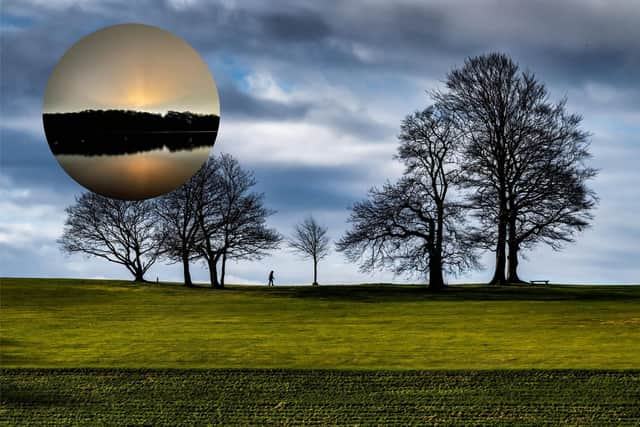Northern Lights UK: Amazing picture captured at Roundhay Park shows stunning Aurora Borealis over Leeds skies
and live on Freeview channel 276
John McLoughlin took the shot of the natural light display over Roundhay Park on Monday night, as the Aurora Borealis was seen across the UK for the second night, as far south as Cornwall and Dorset.
BBC Weather Watchers said this recent display was “best in a very long time”. According to the Met Office, the "lights occur as a consequence of solar activity and result from collisions of charged particles in the solar wind colliding with molecules in the Earth’s upper atmosphere".
Advertisement
Hide AdAdvertisement
Hide AdJohn tweeted the stunning picture of the Northern Lights on Tuesday and said: “Northern Lights above Waterloo Lake, Roundhay Park about midnight last night - truly amazing an delighted to have first seen them from home with the family.” He added that the display was even better to the naked eye, with pink and green lighting up the sky.


Why 2023 is a good year to see Aurora Borealis across the UK
This week the UK has had a front row seat to the stunning show of Aurora Borealis. While many may have missed out on the chance to catch the Northern Lights this time around, experts say we are entering a period in which we can expect to have more opportunity to see them from the UK.
This year we are closer to the solar maximum of cycle number 25, which means there will be a significant increase in solar activity compared to other years, with bigger displays on certain days. The Northern Lights depend on solar activity that follows an 11 year-cycle. During the 11-year cycle the sun has less activity at the beginning and end of the cycle which is known as the solar minimum.
Advertisement
Hide AdAdvertisement
Hide AdThere is also a solar maximum, which happens in the middle of the cycle and during which there is more significant activity, which increases the possibility of seeing more frequent geomagnetic storms and strong Northern Lights at lower latitudes. Astronomers say that increased activity this far in advance of the solar maximum bodes well for future displays of the Northern Lights in Britain.